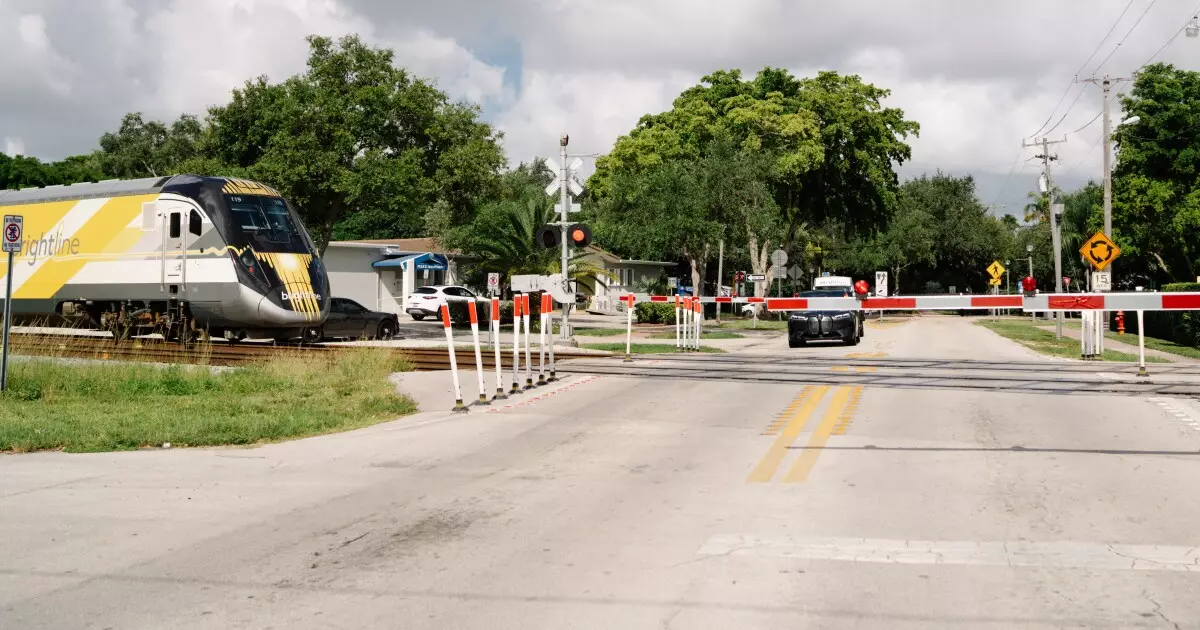On a recent Saturday, the Brightline passenger train, a high-speed rail service operating between Miami and Orlando, collided with a Delray Beach fire truck. This accident marked a significant escalation in a series of unfortunate events affecting the rail line, which has come under scrutiny for its safety record. Initial reports highlighted that the fire truck may have been stationary on the tracks when the train, operating at speeds approaching 125 miles per hour, struck it. Subsequently, 15 individuals, including three firefighters and 12 passengers, sustained injuries, leading to considerable concern about the train’s safety protocols.
In the wake of this collision, questions surrounding Brightline’s safety measures have resurfaced. With 34 fatalities reported along its route from September 2023 to June 2024, the passenger rail service has seen a troubling rise in incidents. Earlier this year, two separate accidents involving Brightline trains resulted in three fatalities, prompting investigations by the National Transportation Safety Board (NTSB). Such a high number of accidents raises alarms regarding operational procedures, safety training of the personnel, and the adequacy of infrastructure at crossings.
The NTSB’s involvement denotes a pivotal examination of Brightline’s safety protocols and operational compliance. Additionally, the Federal Railroad Administration’s preliminary statistics show Florida ranked fourth in the nation for highway-rail grade crossing collisions in 2023, with 122 reported incidents. Advocates for rail safety argue that the state must implement stricter regulations to ensure that rail companies prioritize not only operational efficiency but also the well-being of the community surrounding their routes.
Following the accident, Brightline emphasized the need for community-wide efforts in safety initiatives, reiterating that adhering to established safety measures is critical. The company’s statement highlighted the necessity of not circumventing safety gate protocols at crossings. It is crucial for the public to remain educated regarding the dangers associated with ignoring these safety features, especially given the high speeds at which Brightline operates. The rail operator has affirmed that the majority of accidents involve individuals intentionally breaching these safety mechanisms or trespassing along the rail corridor.
Despite the increase in accidents, some investors maintain that Brightline’s challenges do not necessarily translate into immediate financial risks. As Brightline navigates this troubled terrain, its recent $4.5 billion financing effort successfully elevated its credit rating to investment-grade status, positioning it for increased investor confidence. Yet, the risk factors associated with accidents continue to be disclosed in bond documents, suggesting that while faults may not result in financial distress today, the potential for negative publicity remains a significant concern for the company’s image and operations moving forward.
Moving forward, it is imperative that Brightline reassesses its safety protocols and collaborates with local governments and regulatory entities to enhance safety measures at crossings. Investing in advanced technology, such as automated signaling systems, can help mitigate human errors leading to accidents. Additionally, community outreach programs aimed at spreading awareness about the dangers of railroad intersections should be prioritized to foster a culture of safety.
The recent incident involving Brightline raises numerous concerns that extend beyond the immediate injuries sustained. It invites a broader discussion on the efficacy of safety measures in high-speed rail operations and the responsibilities of both transport companies and the public. As Brightline continues to expand, adopting a more rigorous approach to safety and community engagement will be essential in ensuring the trust and safety of its passengers and the communities it traverses.

